
“So called normality is my nightmare.
However, as long as eccentrics exist,
and thanks be to heaven there are still some,
we can place our hopes in future.”
Gianni Menichetti
“The witch of Positano” is a 1965 film by Sheldon & Diane Rochlin (now named Flame Schon) and the first about Vali Myers’ life that now seems impossible to find [1]. I thought that that title was appropiate to define a woman like Vali Myers, with her flaming red hair and all those intricate tattoos, even on her face, her eyes made up with eye shadow, surrounded by a pack of dogs. Like a shaman she used to wear a lot of jewels, talismans, necklaces and rings and like a magician she charmed, with her hypnotic glance and trasgressive aura. Her gypsy style of dress, that magnificent hotchpotch, her leggings made of clerical brocade, she anticipated the hippy movement by at least a decade.
With a fire red mane, savage rather than just wild; with casual and sumptuous layers of second-hand clothes, which she was the first to seek out among the stalls of Resina at Ercolano and wore them like a sovereign “she was an Amazon” Gianni Menichetti said, “an indomitable creature, a stoic and spartan nomad soul. A primeval, telluric, pagan spirit.”
I discovered this incredible and almost mythical figure reading Vogue about one year ago.Who was she? Where she came from? I read that “Vali Myers was born in Sydney in 1930, she was a quite inward-looking child, who had difficulty reading and writing, she preferred to express herself in dance and drawing. When she reached Paris, at age of 19 to pursue a dance career in the postwar years, she took the bohemian way of life, associating with many of the intellectuals and artists on the city’s lively cultural scene, including Django Reinhardt, Jean Cocteau, Jean Genet and Jean Paul Sartre… In 1952 Vali arrived in Positano, after a highly tormented Parisian phase and an opium addiction from which Rudy Rappold (her companion at the time, an Austrian architect who left everything to be with her) had managed to rescue her. In 1958, after an interlude on Capri, Vali and Rudi decided to live in the little run-down house, which they restored, in the valley Il Porto, embracing a radical form of ecological life style, abstaining from eating meat, surrounding themselves with a chaotic and innocent Eden crowded with dogs, cats, hens, donkeys, sheeps, the sow Ramona and the beloved fox, Foxy. ”
She was an artist, able to translate in colours the visions had in her mystic trance. She did superb, bewitched drawings, full of apparitions and lysergic flights. She preferred to draw women, magic feminine spirits, a sort of primigenial genius mother of Life. The Madonna, the Shaman, the Witch, Sherazade are all the same person and they wear veils, rings and tattoos. Symbols of ancient beauty coming from an ancestral time when mens and animals live together and speak the same language.
Source: valimyers.com; giannimenichetti.com; all pictures from tumblr except Vogue scans by me.
[1] The film “VALI – Witch of Positano” (1965, 60 min) by Sheldon & Diane Rochlin (now named Flame Schon) is available in DVD by the artist herself for $37, including postage/shipping within the USA; $50 outside the USA. Email to purchase: flame.schon@gmail.com .
Thanks Diane for letting me know!
VALI – Witch of Positano, 1965:
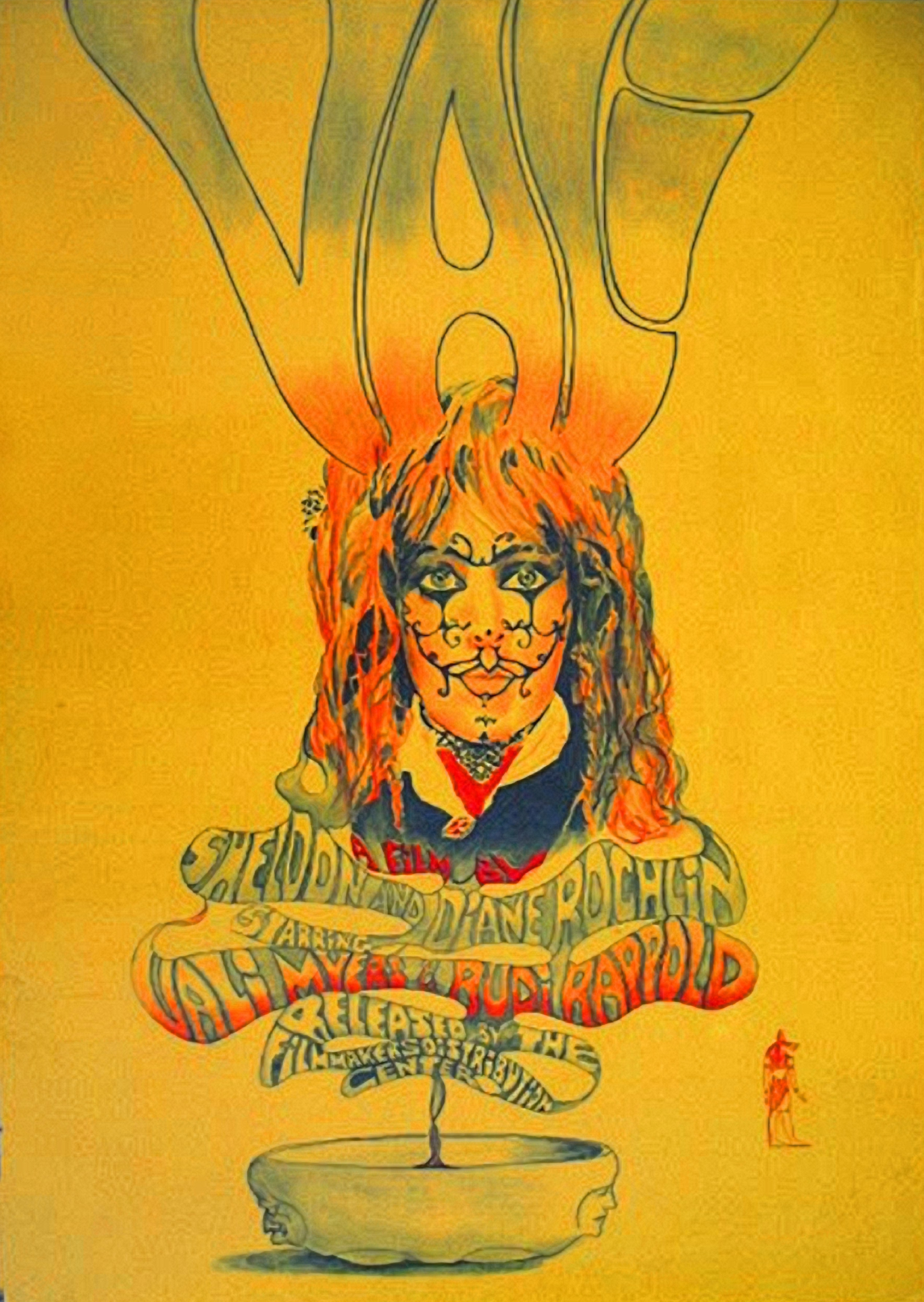 This is the first poster that Sheldon & Diane Rochlin (now named Flame Schon) made for the film.
This is the first poster that Sheldon & Diane Rochlin (now named Flame Schon) made for the film.
That poster is right now in an exhibition of 60s posters at Museum of Modern Art (MOMA) in NYC.
The film can be purchased from the artist herself by writing an email to: flame.schon@gmail.com.
Thanks Diane!
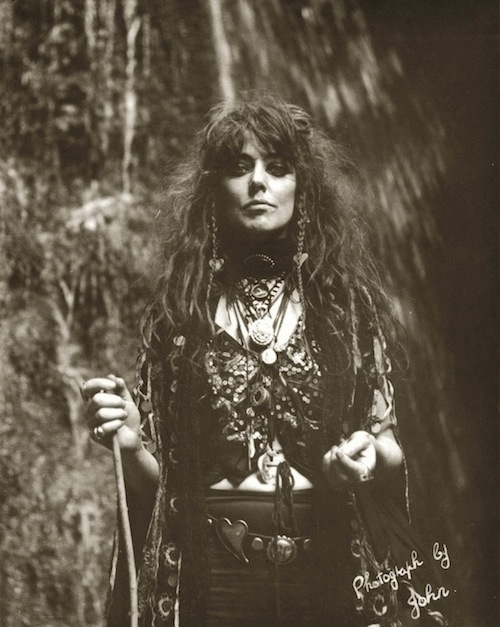

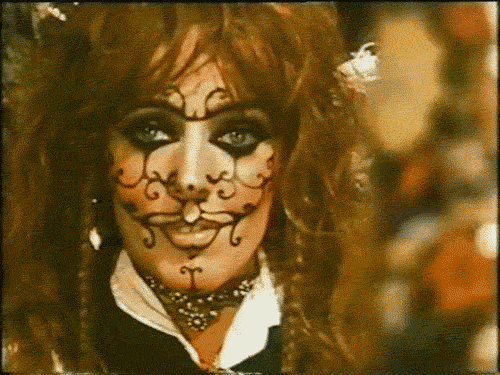 a scene from “The witch of Positano”, 1965, by Sheldon & Diane Rochlin (now named Flame Schon)
a scene from “The witch of Positano”, 1965, by Sheldon & Diane Rochlin (now named Flame Schon)
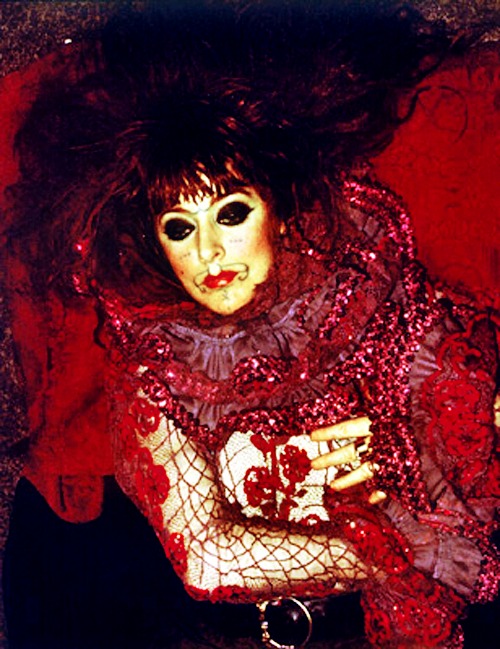
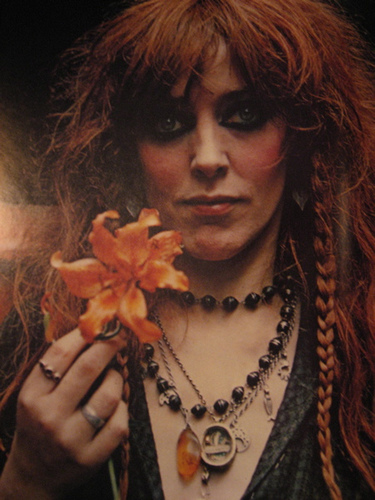

Il Porto Valley:

Vali and Rudi
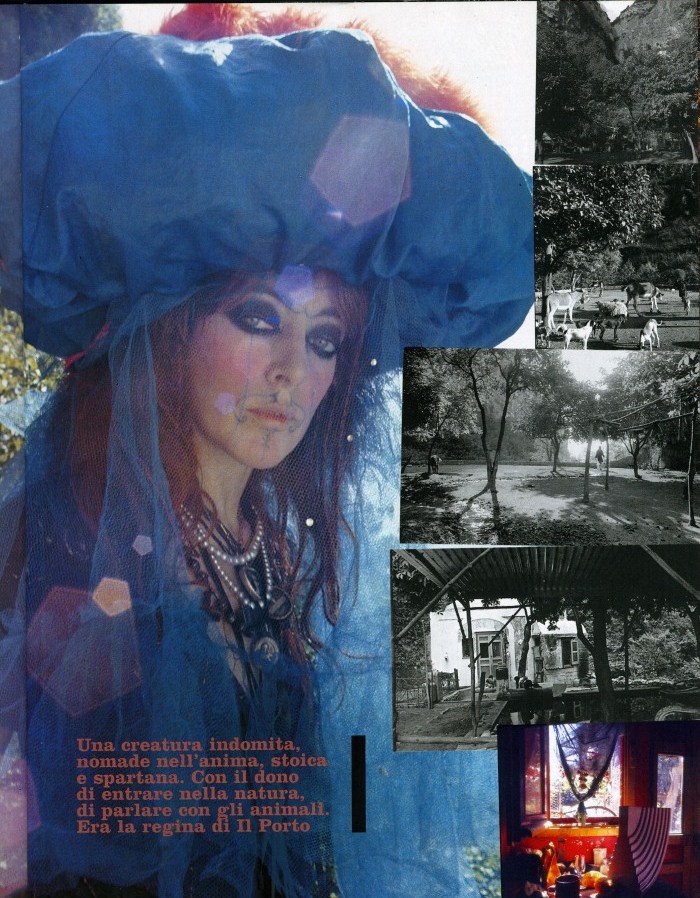 Vali playing the part of Sherazade, one of her favorite characters. from the top: towering cliffs surrounding the valley; the animals; the courtyard; the pavilion; inside the house, on the table a Yantra pot by Ettore Sottsass gifted by the friend and photographer Francesca De Col Tana, who also taken these photos.
Vali playing the part of Sherazade, one of her favorite characters. from the top: towering cliffs surrounding the valley; the animals; the courtyard; the pavilion; inside the house, on the table a Yantra pot by Ettore Sottsass gifted by the friend and photographer Francesca De Col Tana, who also taken these photos.

the pavilion before and after the moorish decoration. in the middle: the courtyard
Today is Gianni Menichetti, a poet first and foremost, a writer and for 39 years Vali’s life companion, to preserve the integrity of Il Porto Valley. Gianni met Vali in 1971 when he was 18 through a friend and soon began living with her and together took care of the large animal family that developed in the valley. “In Vali’s little house, which was transformed into a tiny Moorish pavilion, the bed was on a raised loft. Here she would also meditate and draw using a very sharp goose feather on handmade Amalfi paper, preferably at night. Her world was devoted to horror vacui, filled up with objects, memoirs, votive offerings and papers. Necklaces and festoons made of lace hung from a lamp. In one corner a Madonna of Sorrows, her heart pierced by swords, bore witness to her bizarre syncretic mysticism.”
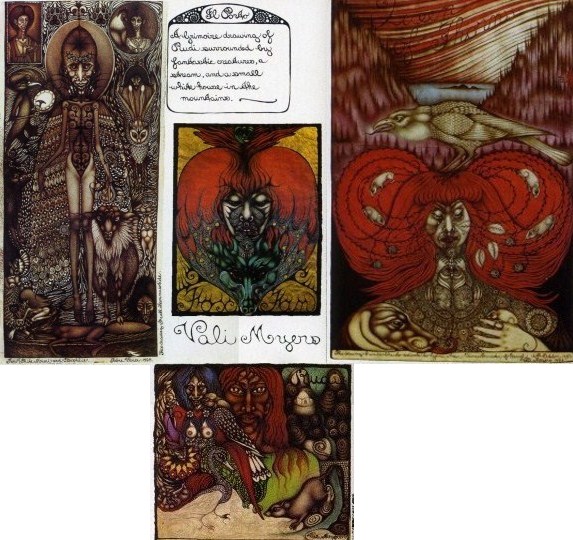 drawings from “Vali Myers: Drawings 1949-1979”
drawings from “Vali Myers: Drawings 1949-1979”

Vali in the raised loft; polaroid: the Valley Il Porto; the Madonna of Sorrows statue

Vali dressed like a Madonna and the Madonna of Sorrows detail
“I use the mythical Madonna figure a lot in my art. The center of life is female – we all come from our mothers. I’ve always drawn women or female spirits. I feel deeply about this – who gives a damn about some guy on a cross? My mother’s creativity was smothered after she married and raised a family, but she was supportive of me – even my father expected me to carry on in her footsteps. I prefer to have no kids but lots of animals.”
Vali Myers

“Vali, Gianni & Toads, 1972” (c) Rudi Rappold
“I was by her side” Menichetti said “until her departure from this world, which occured after a bried illness in Melbourne, in February 2003.” After years of battling with local police and government bureaucracy Vali finally obtained permission to turn the valley into a wildlife sanctuary under the protection of the World Wildlife and today Gianni Menichetti continues his battle to keep safe from developers the Valley, against a thousand difficulties.
Gianni does not live steeped in nature, he is simply an integral part of it: he does not use electricity, running water or gas and lives in his extraordinarily diverse and beloved community of animals-friends, each with a name. His site displays a lot of his works and poems and he also wrote an intese biography entitled “Vali Myers, a Memoir”, the incredible story of the 30 years he spent living with Vali Myers. “His Savage Mistress” is an interesting video about Gianni’s life, his animals, art & poetry in his valley home and here another great video about Gianni’s life. (only italian).
Influences:
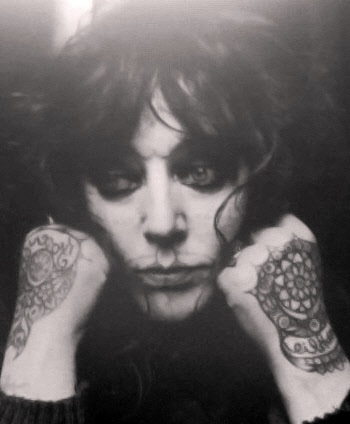
Vali became a legend and an inspiration for young people like Patty Smith, who collected her works and photographs and in 1973 in New York, Patti asked Vali to tattoo her knee with a tiny little lightning bolt in ‘tribute to Crazy Horse’. Salvador Dali praised the quality of Vali’s drawings and urged her to start exhibiting formally. Andy Warhol suggested Vali print reproductions of her work to sell to enthusiasts. In 1989, Australian filmmaker, Ruth Cullen, released her beautiful film on Vali Myers, “The Tightrope Dancer”. Vali is also mentioned in Marianne Faithfull’s 1994 autobiography Faithfull, she visited Vali Myers in Positano: “Marianne Faithful turned up one day with her boyfriend to see some of my work. I thought, who is this scrawny little guy, so I said to him, what is it you do Micky? How would I know who the bloody hell Mick Jagger was? – I wasn’t interested in Mick Jagger, I was always into Marianne. She was a real fighter.” Perhaps the deepest impression was made on the American playwright Tennessee Williams who Vali refers to as ‘the saddest, most sentimental man I have ever known.’ After spending time with Vali, Williams was so taken with her originality and lust for life that he based the free-spirited character Carol, in his play ‘Orpheus Descending’, directly on her.
 Patti Smith with Lightning Bolt tattoo that Vali gave her in The Chelsea Hotel dedicated to Crazy Horse
Patti Smith with Lightning Bolt tattoo that Vali gave her in The Chelsea Hotel dedicated to Crazy Horse


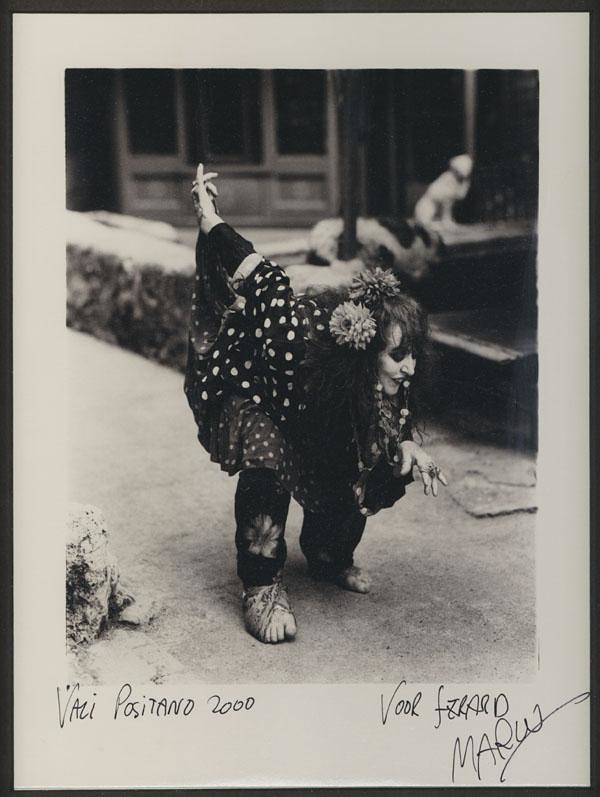


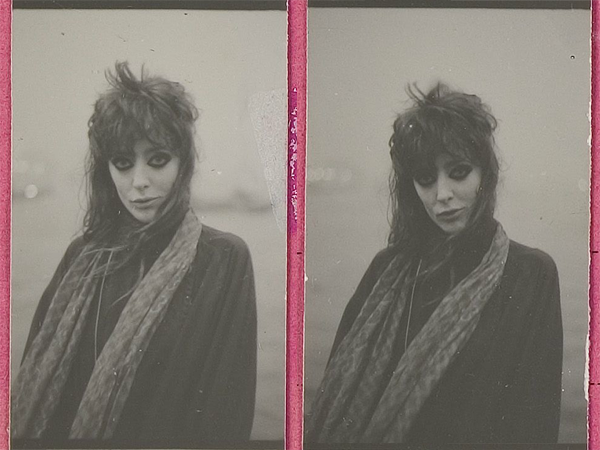


Vali & Caroline sitting outside of Caroline’s cave
(this photo is one of many that Sheldon & Diane Rochlin (now named Flame Schon) took at the time of shooting the film “The witch of Positano”).
Thanks Diane!

Her animals and drawings :
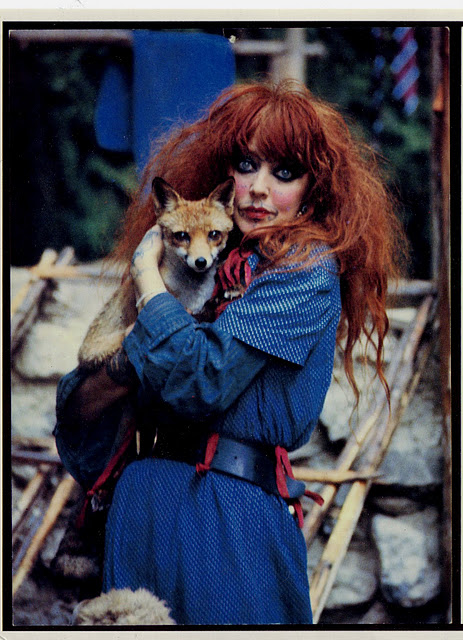
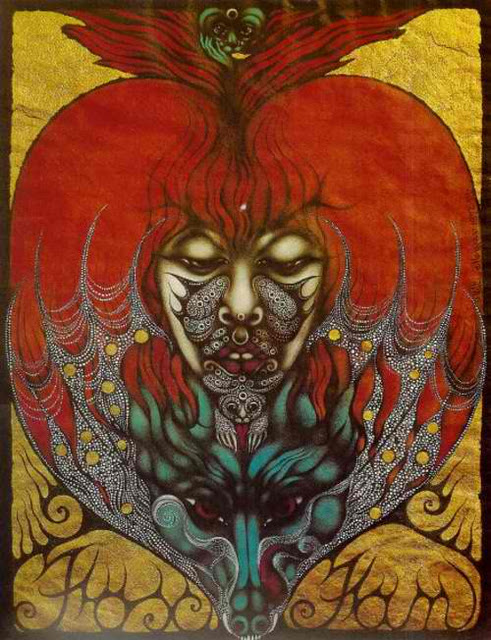
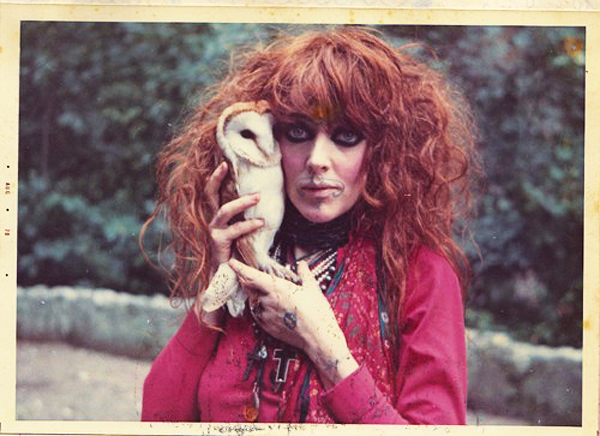
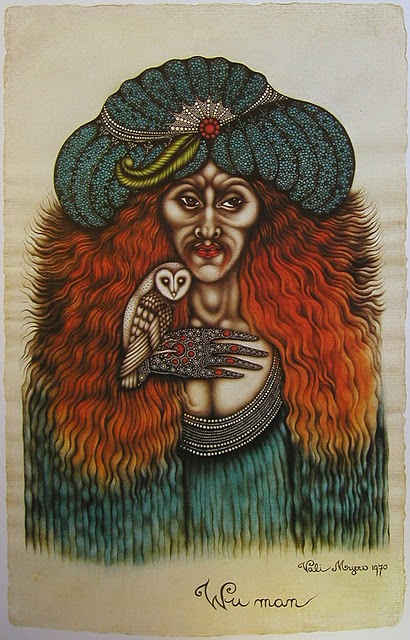
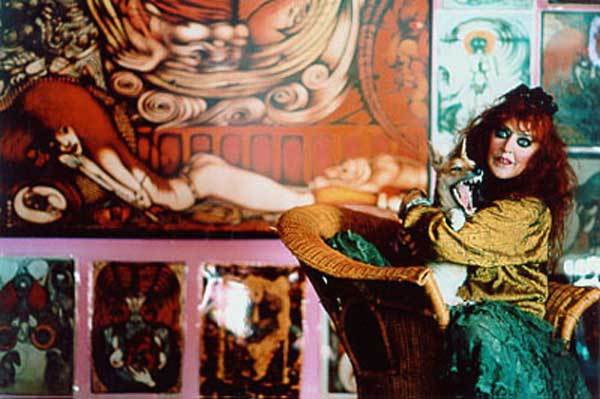

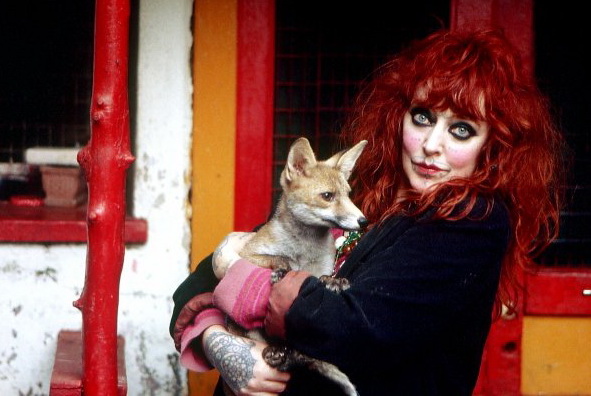

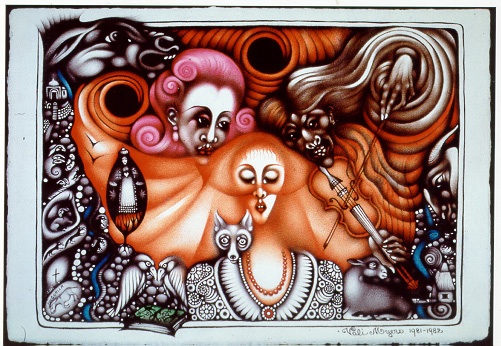


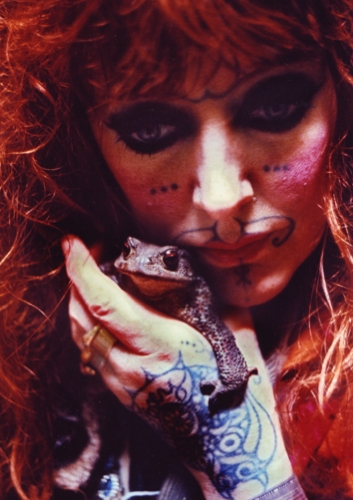


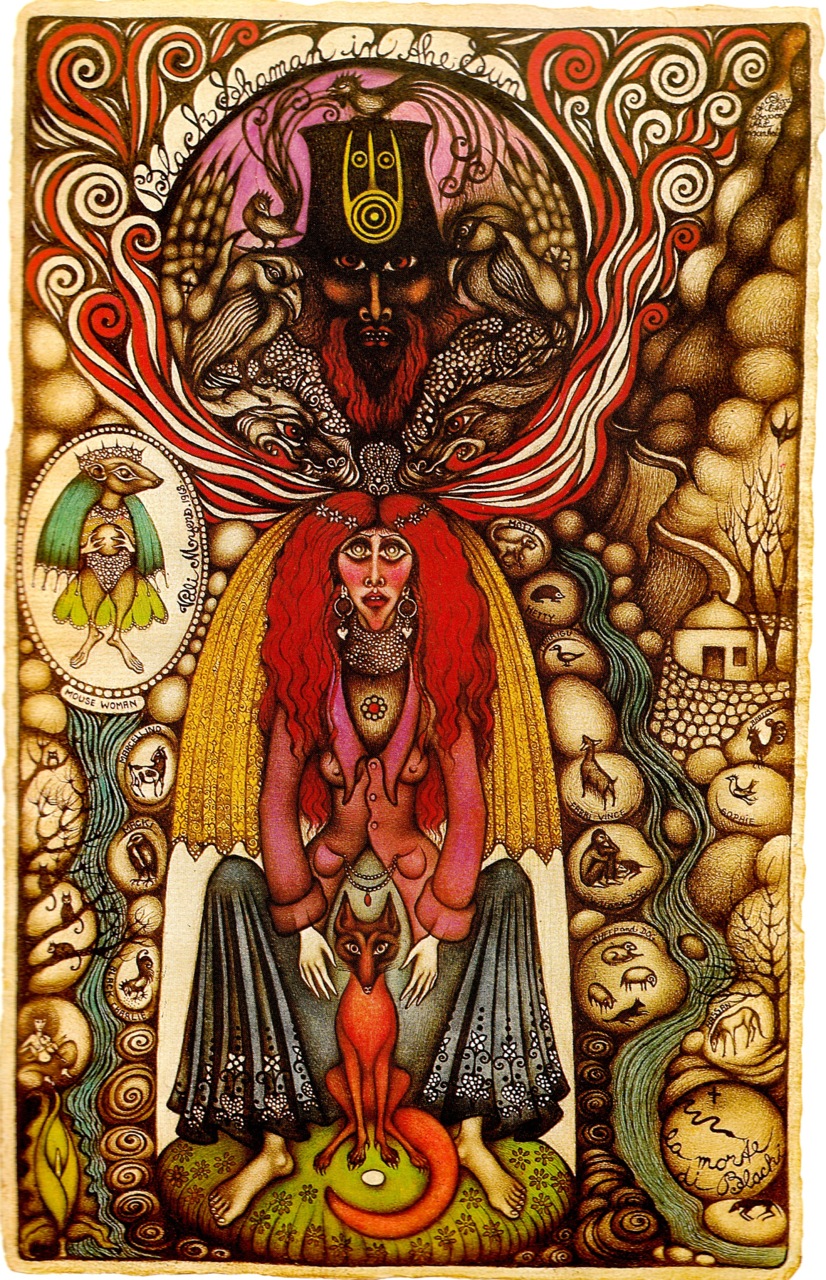

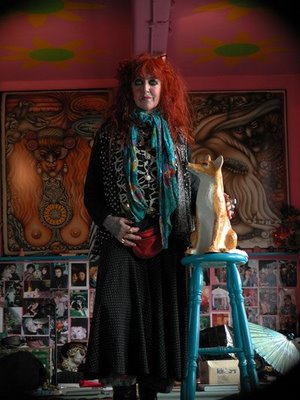

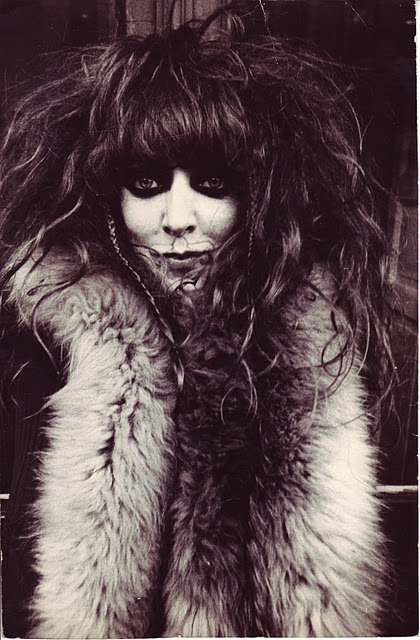


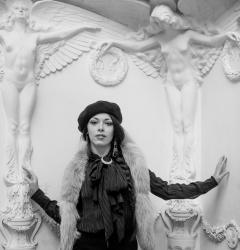


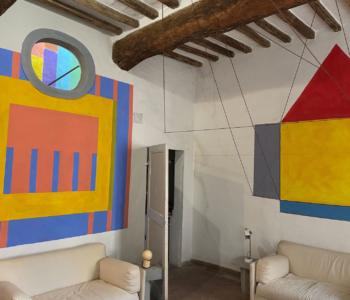
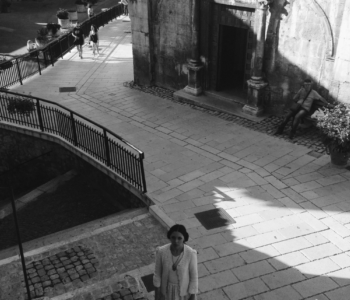
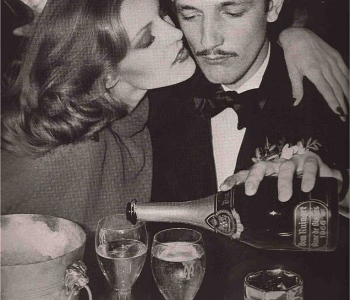
5 Commenti a “Vali Myers, the witch of Positano”
such a well curated article!!! love!!!
Hello, wonderful article. As a child i was taken to meet her. It was the late seventies, my family and i were on holiday in Positano . One afternoon my mother, sister and i were driven to their home by the son of the family we were staying with. I was mesmerised. Her vivid red hair, tattoos and clothes with patches and little mirrors sewn in. I recall there being a cave filled with cushions, candles and her extraordinary paintings. There was the fox who wouldn’t let us children anywhere near but was completely trusting of her. She painted henna designs on my sister and I, made us hot chocolate, sang songs and danced around the fire with us. Quite literally another world from that which i knew. A memory I cherish fondly.
Kind regards, Alex.
Thank you for your article. Vali will be remembered forever through her art. Most of the people who knew her are long gone now. When I was 18 I lived in Positano for a few years with a young boy from the town in Chiesa Nuova. Vali and Caroline and I were friends. The memories of that time in the 1960-70’s are engraved in my heart.
Wow your article is filled with extreme beauty and is super precious.
Thank you so much
thank you so much!
Trackbacks per le News